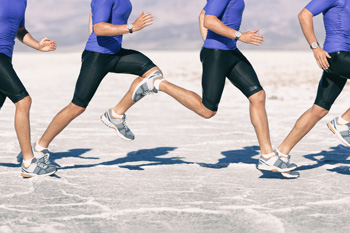North Andover (978) 686-7623
Tewksbury (978) 640-1010
Assessing Foot Biomechanics

Foot assessment is a common practice in podiatry where podiatrists classify foot types and detect potential causes of foot-related issues. This helps in understanding foot structure and its connection to injuries or problems. In podiatry, different methods are used to assess foot structure, including visual observation, measurements, and tests. These methods help podiatrists identify if someone has a high arch, neutral foot, or a low arch, among other classifications. One useful tool is the foot posture index, which helps assess foot pronation or supination. It is a simple system where the podiatrist observes and scores different aspects of foot posture. Podiatrists also use static biomechanical measures, like arch angles, foot range of motion, and joint alignments, to evaluate a patient's foot condition. These measures provide valuable information about arch height, posture, and how the foot moves. These assessments are vital for diagnosing foot problems, prescribing treatments, and designing custom orthotics or footwear to improve a patient's foot health. If you are having foot problems, it is suggested that you schedule an appointment with a podiatrist for a biomechanical assessment, diagnosis, and treatment.
If you have any concerns about your feet, contact one of our podiatrists from Foot Health Center of Merrimack Valley. Our doctors can provide the care you need to keep you pain-free and on your feet.
Biomechanics in Podiatry
Podiatric biomechanics is a particular sector of specialty podiatry with licensed practitioners who are trained to diagnose and treat conditions affecting the foot, ankle and lower leg. Biomechanics deals with the forces that act against the body, causing an interference with the biological structures. It focuses on the movement of the ankle, the foot and the forces that interact with them.
A History of Biomechanics
- Biomechanics dates back to the BC era in Egypt where evidence of professional foot care has been recorded.
- In 1974, biomechanics gained a higher profile from the studies of Merton Root, who claimed that by changing or controlling the forces between the ankle and the foot, corrections or conditions could be implemented to gain strength and coordination in the area.
Modern technological improvements are based on past theories and therapeutic processes that provide a better understanding of podiatric concepts for biomechanics. Computers can provide accurate information about the forces and patterns of the feet and lower legs.
Understanding biomechanics of the feet can help improve and eliminate pain, stopping further stress to the foot.
If you have any questions please feel free to contact one of our offices located in North Andover, and Tewksbury, MA . We offer the newest diagnostic and treatment technologies for all your foot and ankle needs.






